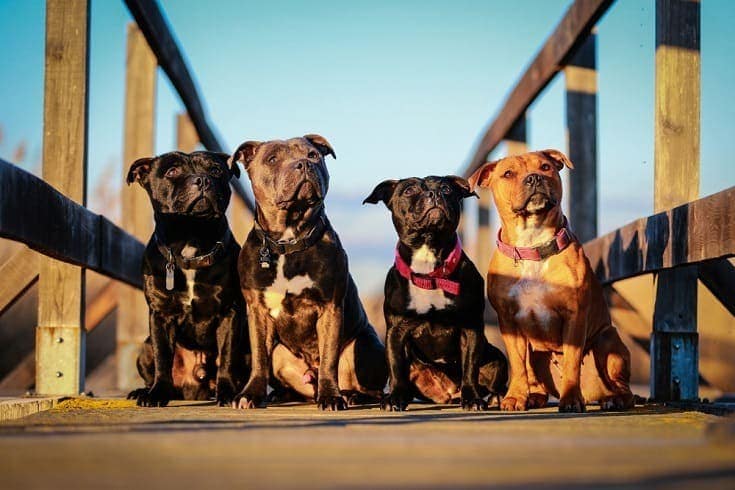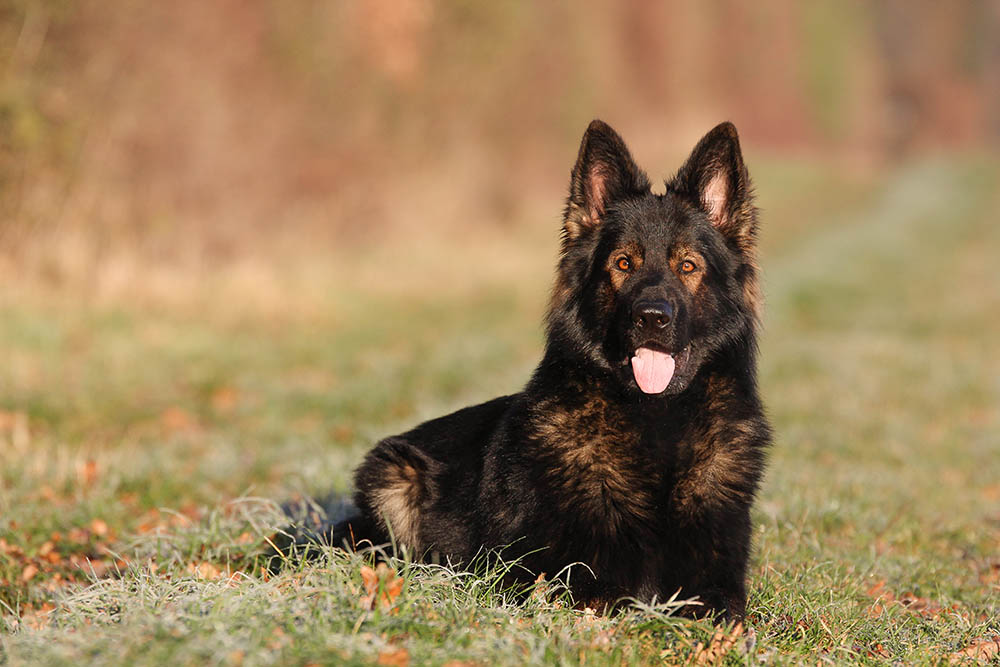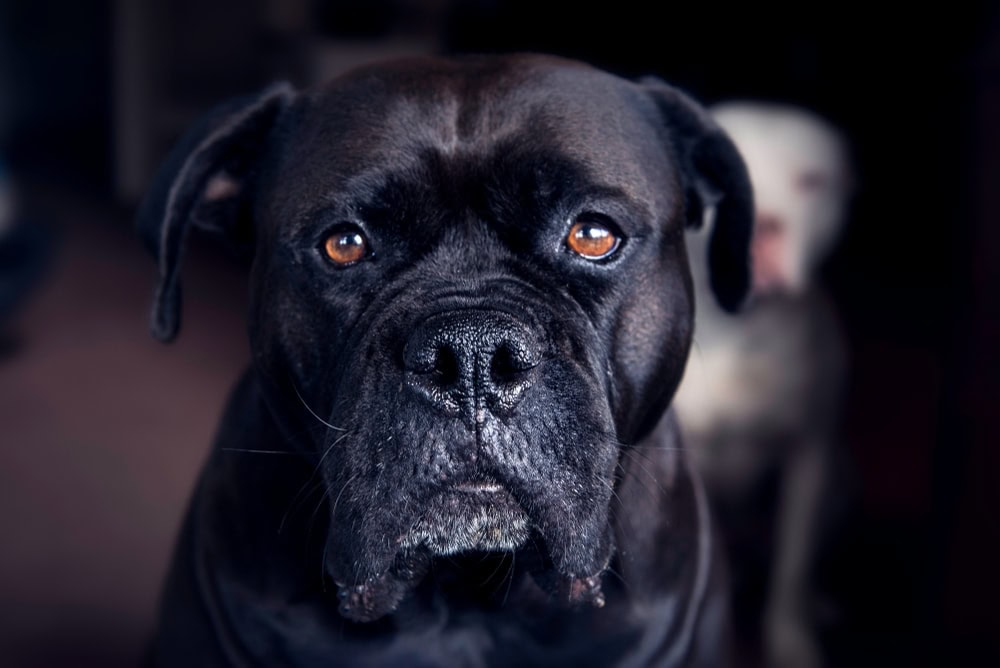Alaskan Pit Bull (Alaskan Malamute & Pit Bull Mix): Info, Pictures

Updated on
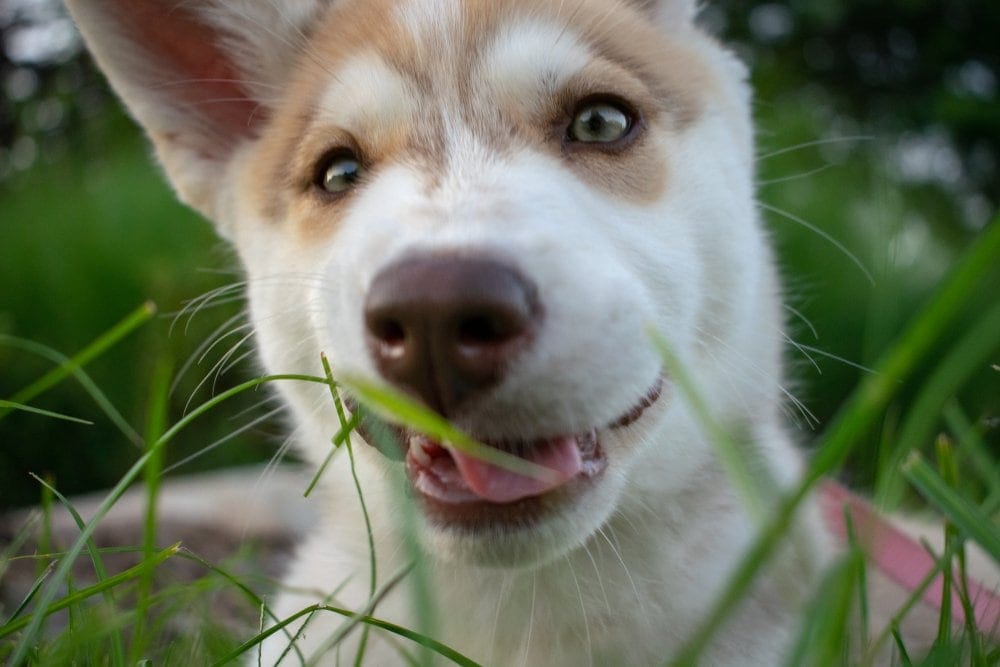
| Height: | 19 – 26 inches |
| Weight: | 60 – 80 pounds |
| Lifespan: | 13 – 15 years |
| Colors: | White, silver, red, brown, gray, black |
| Suitable for: | Active families, those looking for an affectionate, active dog |
| Temperament: | Loyal, loving, protective, gets along with everyone |
The Alaskan Pit Bull is a crossbreed between the Alaskan Malamute and the American Pit Bull Terrier.
The Alaskan Malamute dates back to four thousand years ago. It was named after the Mahlemuits tribe, a people who were ancient inhabitants of northwest Alaska. The Mahlemuits relied on these dogs to pull their sleds and help them hunt bears and seals.
In the early 19th century, prospectors rushing to the west coast of the Unitameed States adopted Alaskan Malamutes. Unfortunately, they interbred these dogs with smaller breeds, diluting the breed. This practice went on until the 1920s, when efforts to revive the purebred variety bore success. The American Kennel Club went on to recognize this breed in 1935.
The American Pit Bull was bred for dogfighting. Its name notwithstanding, this breed was developed in England, in a region called Staffordshire. When dog fighting became illegal, most people no longer saw the need to keep Pit Bulls. Nonetheless, some still made it to the States, where they were breed to the hefty, large-headed variety we know today.
The Alaskan Pit Bull is an interesting dog breed, as you will see. Unfortunately, it has yet to be recognized by the American Kennel Club.
Alaskan Pit Bull Puppies
Given their ancestry of sled pulling and bear hunting, it is no wonder that Alaskan Pit Bulls are so energetic. They can run around for hours, and sometimes their energy seems boundless. Individuals leaning more toward their Pit Bull parents tend to be even more active. Alaskan Pit Bulls are considered easy to train. This, however, is only true if the trainer is firm and confident, since these dogs have a strong pack instinct. They need a clear pack leader, and in the absence of one, they will gladly run the show.
The Alaskan Pit is prone to fewer diseases compared to other dogs of its size. When well taken care of, these dogs can live for up to 15 years. Alaskan Pits love to be in the company of humans and will get along well with other dogs. They are also extremely loyal and will do their best to please their loved ones.
3 Little-Known Facts About the Alaskan Pit Bull
1. The American Pit Bull, one of the Alaskan Pit Bull parent breeds, is also known as the American Staffordshire Terrier.
2. Despite being large dogs, Alaskan Pit Bull Terriers can be quite cuddly and affectionate.
3. Alaskan Pit Bulls are sexually dimorphic; females tend to be slightly smaller and lighter than males.
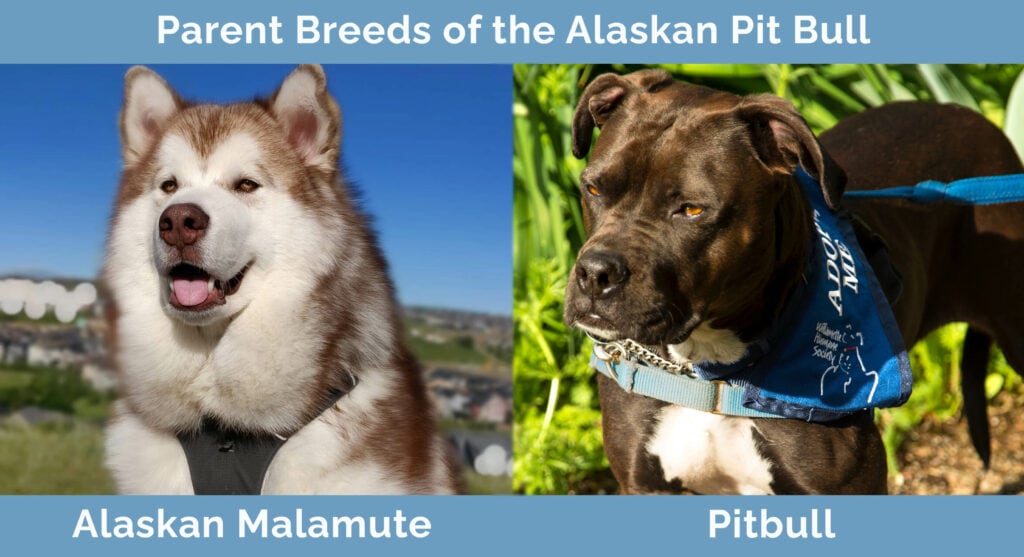
Temperament & Intelligence of the Alaskan Pit Bull 🧠
The unique mix between the Alaskan Malamute and American Pit Bull means this dog is just at home sledding in the Alaskan tundra as they are cuddling their owner next to the fireplace.
Alaskan Pit Bulls inherit an independent streak; every once in a while, they will want to be alone. They also have a strong pack instinct. If you do not assert yourself as a leader, the dog will assume that role.
Like most dog breeds, Alaskan Pit Bulls need to be socialized early enough. If not, the puppies will grow up withdrawn from humans and other dogs. Worse still, they could become aggressive and snap at anyone who crosses their path. It is difficult to socialize an adult dog, so save yourself the trouble and socialize your puppies well.
Are These Dogs Good for Families? 🏡
Their loyal and affectionate nature makes Alaskan Pit Bulls perfect family pets. They get along well with children, but it is important to teach your children the dos and don’ts of dog handling.
Alaskan Pit Bulls are not hypoallergenic, so individuals with allergies should avoid this breed.
In addition to their large size and considerable mass, their protective nature makes them good guard dogs. They will bark at unfamiliar people and will alert you to any suspicious activity.
Does This Breed Get Along With Other Pets? 🐶 😽
Their hunting ancestry notwithstanding, Alaskan Pit Bulls get along well with other pets. They will not see smaller pets as prey. Alaskan Pit Bulls also have no herding instinct, so you do not have to worry about your canine friend herding the cat around the house.
 Things to Know When Owning an Alaskan Pit Bull
Things to Know When Owning an Alaskan Pit Bull
Getting a dog is a big decision, not only because of the financial implications but also because of other factors that relate to its maintenance. Food, exercise, grooming, and health requirements can sometimes be deal-breakers, so read on to see if the Alaskan Pit Bull is really for you.
Food & Diet Requirements 🦴
Like all other dogs, Alaskan Pit Bulls need high-quality feed. Three cups, spread out across the day, should be enough. This amount may vary depending on how active your pet is — higher levels of physical activity equal higher amounts of food and vice versa.
Exercise 🐕
The Alaskan Pit Bull is descended from breeds with a reputation for endurance. Consequently, dogs of this breed require at least an hour of exercise: Walking, running, hiking, and playing all count as exercise. Because of its size, you should only get an Alaskan Pit Bull if you have ample indoor and outdoor space.
Training 🦮
Alaskan Pit Bulls are easy to train, provided the trainer is firm and confident. Avoid being harsh, as negative training methods often lead to antisocial behavior. Positive training techniques will have the most results. This is as simple as rewarding behaviors you like and ignoring ones you do not like.
Grooming ✂️
Despite being descended from long-haired breeds, Alaskan Pit Bulls have a short, moderately shedding coat. Brushing their fur once a week should be sufficient, and only bathe them when necessary, using an appropriate dog shampoo.
In the same breath, clean their ears weekly, brush their teeth at least thrice a week, and get their nails clipped once every month.
Health and Conditions ❤️
Alaskan Pit Bulls suffer fewer diseases compared to other dogs of their size. Serious ones you should look out for include canine hip dysplasia and chondrodysplasia. The Pit is also susceptible to issues such as cataracts, glaucoma, and diabetes.
Male vs. Female
The choice between a male and female Alaskan Pit Bull is almost purely based on preference. However, males have been observed to be more energetic than females, albeit slightly.
There are no clear behavioral and physical advantages to either gender.
Final Thoughts
The Alaskan Pit Bull is a very large dog that gets along well with people. They are a good guard dog and are best suited for owners with ample space. First-time dog owners should look to other breeds because this breed needs to be trained by a firm, confident, and experienced handler.
See also:
- American Pitbull Terrier vs American Bully: What’s the Difference?
- Samoyed Alaskan Malamute Mix: Care, Pictures, Traits & More
Featured image credit: MAML Photography, Shutterstock


 Things to Know When Owning an Alaskan Pit Bull
Things to Know When Owning an Alaskan Pit Bull

